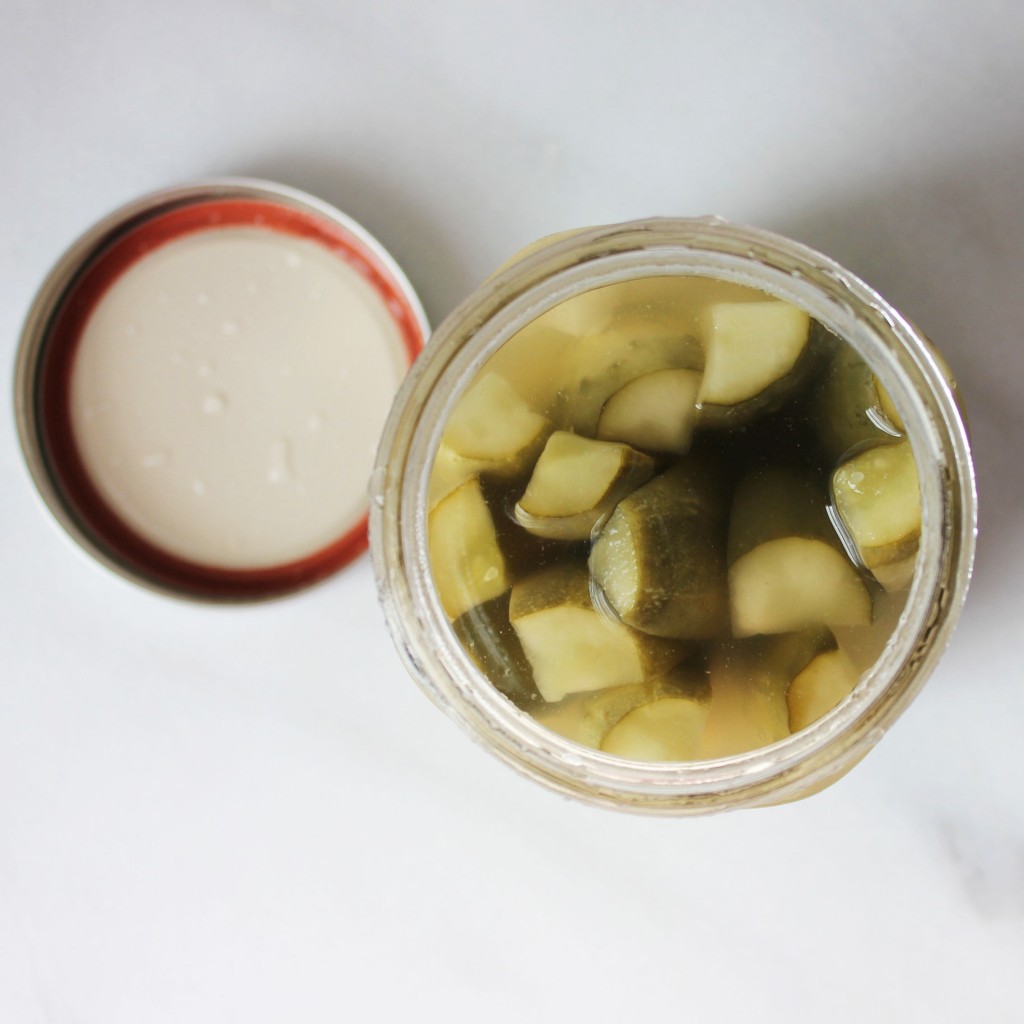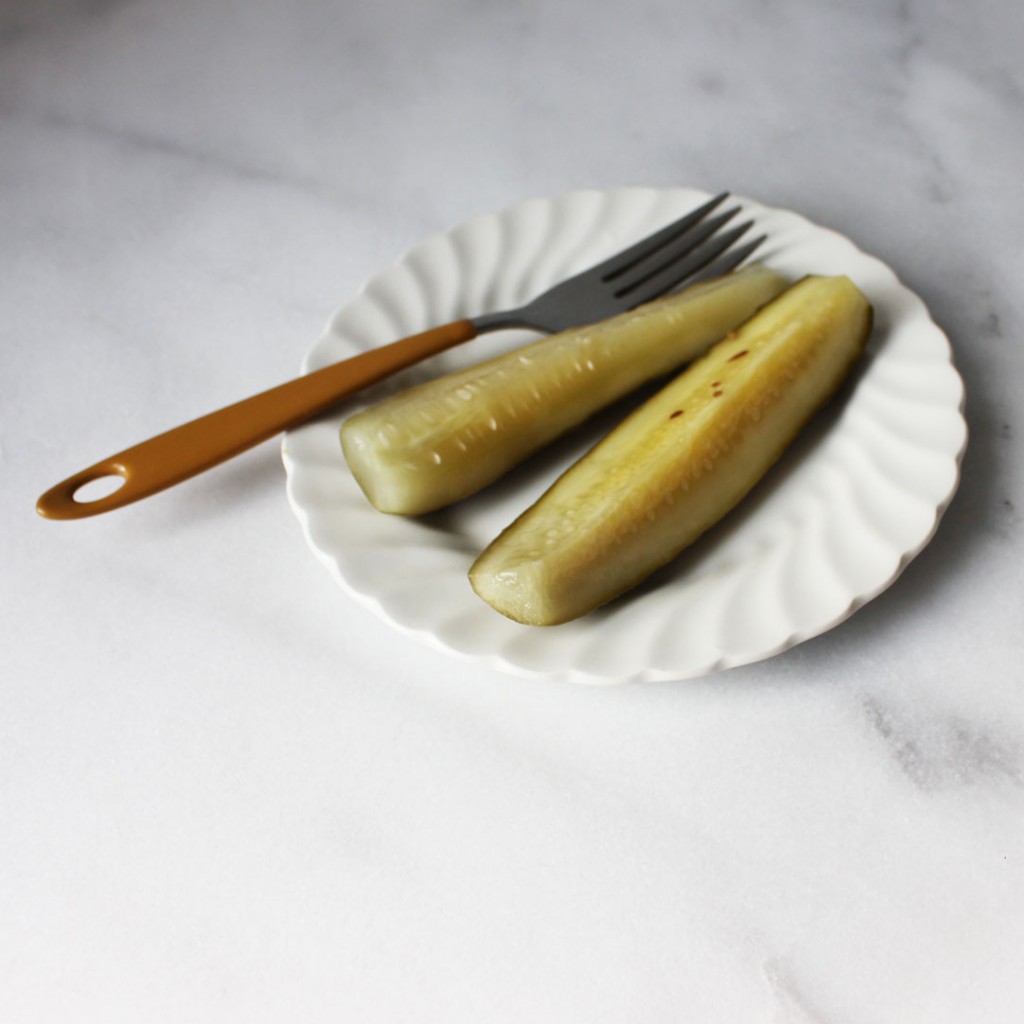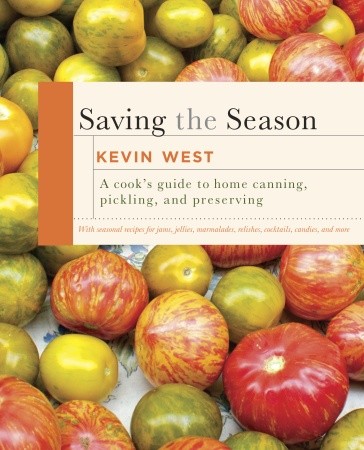A handful of weekends ago, still in not-quite-summer here in the northeast, we took the bus to visit my grandma in rural Pennsylvania. I brought back a little bag of spruce tips to make syrup and it got me thinking about the many fruits, vegetables, and other wild edibles I’ve shuttled back to the city—often on public transportation—over the years: a grandma-grown butternut squash wrapped gingerly in a sweater, a flat of strawberries with red-stained jeans on the G train, two tote bags full of apples on the megabus from Albany, and a pilfered flat-rate box full of blueberries all the way back from Vermont, first on a rental car, then the Metro North, then the subway. I have come to truly value these little pilgrimages, the way that they punctuate my year, and the preserving that follows.
Saving the Season, the beautiful new preserving book by Kevin West of the blog of the same name, is peppered with these same sorts of road trips, which illuminate the regional food cultures around things like ramps and wild blueberries. This is a different sort of preserving book and for that reason, I think you’ll love it. Beginning with an invocation of Edna Lewis, the great force of American food writing and cooking, West traces the craft of saving the season through visual art, science, poetry, and contemporary American foodways, weaving in bits of each. The result is a comprehensive preserving book that also manages to be catalog of the history and culture around putting up.
West is a certified master food preserver and the recipes in the book are unique and contemporary without compromising safety. Although it certainly is an exciting book for folks like me who are already deeply interested in preserving, it is thorough enough to be suitable for beginners as well. There’s a fantastic and exhaustive appendix of fruit varieties as well as a chart of peak seasons by region for produce across the US.
I reached out to the folks at Knopf to get a review copy of the book because I’ve been looking forward to it for a long time and was lucky enough that they obliged. Thanks to Knopf, I also have one copy of the book to give away (US addresses only, please).
Leave a comment below by Monday, July 1st at 5pm ET to be entered to win a copy of Saving the Season.
CUCUMBER DILL SPEARS AND CHIPS (reprinted with permission from Saving the Season)
Yields 2 quarts
Â
On page 39, I explain that processing your pickles in a hot-water bath rather than a boiling-water bath will give you a firmer texture. It follows that if you want pickles with real snap, don’t process them at all. These dill-pickle spears—or sandwich chips, depending on how you slice them—can be processed, if you want, for long- term shelf storage, but first try making a batch to keep in the refrigerator. They will be crisp, and the flavor of raw cucumber comes through. It’s the freshest-tasting pickle in this book, and perhaps my favorite. The recipe can be scaled up.
¼ cup kosher salt
6 cups lukewarm water
2 teaspoons coriander seeds
½ teaspoon fennel seeds
3 large flowering dill heads (4 inches across)
3 pounds Kirby pickling cucumbers
4 cloves garlic, crushed
2 cups white- wine vinegar
1. Dissolve the salt in the water, and add the coriander, fennel, and dill. Set aside.
2. Scrub the cucumbers well, rubbing off any spines. Cut away a thin round from the stem and blossom ends, and slice lengthwise into quarters. Put the spears in a large bowl, and cover with the brine. Weight the cucumbers with a plate, cover the bowl with a kitchen towel, and set aside for 24 hours. If the bowl won’t fit in your refrigerator, it’s fine to leave it out at room temperature.
3. The next day, pack the cucumber spears into two scalded quart jars, saving the brine. Measure out 2 cups of the brine and reserve. Strain the remaining brine through a fi ne sieve to capture the aromatics, and divide them between the jars. Tuck a dill head and two cloves of garlic into each jar.
4. Mix the vinegar and the 2 cups reserved brine, and bring to a boil. Pour it over the pickles to cover. Seal the jars, and store in the refrigerator for a week before using. For long- term shelf storage, leave ½ inch headspace when filling the jars, then seal. Process in a boiling- water bath for 10 minutes, or in a hot- water bath, between 180 and 185 degrees, for 30 minutes.
Â
[Note] Instead of spears, you could slice your cucumbers into round coins, lengthwise “slabs,†or bias-cut ovals. Make the slices 3â„8 inch thick and soak them in the brine for 12 hours instead of 24.





I love his blog. And yours. You are super committed to haul all of that produce on public transportation!
This book sounds wonderful – I would love to add it to my library!
I have so wanted to grow my talents and knowledge in my home kitchen – this looks like the perfect was to do it!
This does look like a lovely one. I need a bigger house just for my cookbook lust! 🙂
I’m looking forward to this book as well! I know this book will be well-written and of excellent taste. Thanks for the chance to win it!
I love canning books and an addicted to the process. I look forward to researching Kevin’s blog ASAP. Thank you for the chance to win his book
Looks like a great cookbook and a great pickle recipe. I think I will finally be successful with my cucumber-growing this year (not an easy feat in chilly Alaska). When they ripen, I will have to try this! You can never have too many pickles, in my opinion! 🙂
Soon I will make the first batch of summer pickles! SOON. 🙂 Thanks for the great giveaway opportunity–this book sounds wonderful!
Just got in to canning this year! Kevin’s blog is fantastic!!!
I love making pickles, and can’t wait for my little cucumber plantlets to get tall enough to grow up their trellis. I have a tried-and-true recipe from OSU Extension, but will have to give this one a try also. Thanks for sharing.
yummy! i am trying these pickles today, and would love to win the book for more new recipes
This sounds like a great book! I love books that look at preserving with a twist.
I am now retired and have time for projects like this. Love pickles so this is a good one to start with.
Yum! I’ve been wanting to get my hands on this book. Especially because I just moved into an 1830s farmhouse with a huge, sunny kitchen, instead of the urban galley kitchen I’ve been working in. Preserving just became a whole lot easier! 🙂
What a gorgeous cover!
I have never pickled anything, I am going to make this my first
I have been making crock pickles for teh past 2 years using Wild Fermentation by Katz as my guide. Got to where I can do a passable kosher style pickle. However I am going to use this recipe and method and see how it improves. Thank you.
These look incredible. I can’t wait to get my hands on this book! Thanks for the wonderful post!
Ooh, I can’t wait to try these!
I definitely want to try out this dill pickle recipe ASAP. This book sounds pretty amazing, too. Happy summer. 🙂
I’m about to come into a large garden bounty… this would be helpful, especially since my husband will be deployed all summer and I’m eating for one (but planted for twelve!)…
Comments on this entry are closed.